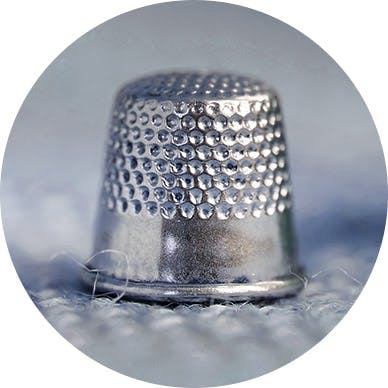In the world of custom clothing labels, there are various printing processes available. One such method is the DTF transfer. DTF stands for Direct To Film transfer, and it is a unique printing process used by companies like Dutch Label Shop to create high-quality custom clothing labels that stand out from the crowd. In this article, we will explore the basics of DTF transfer, including its definition, importance, process, benefits, potential drawbacks, and frequently asked questions. So, let's dive in and discover everything you need to know about DTF transfer.

Understanding the Concept of DTF Transfer
The Definition of DTF Transfer
DTF transfer is a printing technique specifically designed for creating clothing labels. It involves printing the label design onto a thin film, which is then transferred to the fabric using heat and pressure. This process allows for precise and vibrant designs that adhere well to different types of garment materials, providing durable and professional-looking labels.
When it comes to clothing labels, attention to detail is crucial. The DTF transfer method ensures that every intricate element of the label design is accurately reproduced. From small text to complex logos, the precision of DTF transfer guarantees that your brand's identity is reflected in every label.
But how does DTF transfer achieve such accuracy? The answer lies in the thin film used in the process. This film acts as a carrier for the label design, allowing it to be easily transferred onto the fabric. The film is specially formulated to withstand the heat and pressure required for the transfer, ensuring that the design remains intact and vibrant.
The Importance of DTF Transfer
DTF transfer offers several advantages that make it a popular choice among manufacturers and designers. Firstly, it allows for intricate and detailed designs, including small text and complex logos, to be accurately reproduced on labels. This level of precision ensures that every label reflects the brand's identity and enhances the overall appeal of the garment.
Imagine a clothing label with a delicate script font or a logo with intricate patterns. With DTF transfer, these designs can be faithfully reproduced, capturing every fine detail. This level of craftsmanship not only adds a touch of elegance to the garment but also enhances the perceived value of the brand.
Secondly, DTF transfer is versatile and compatible with various fabrics, including cotton, polyester, and blends. This flexibility enables clothing manufacturers to use DTF transfer for a wide range of products, from t-shirts and dresses to jackets and accessories.
Whether you're working with natural fibers like cotton or synthetic materials like polyester, DTF transfer can deliver exceptional results. The heat and pressure applied during the transfer process ensure that the label adheres securely to the fabric, regardless of its composition. This versatility allows designers and manufacturers to explore different fabric options without compromising on label quality.
Lastly, DTF transfer is a cost-effective solution for custom clothing labels. It eliminates the need for costly setup fees and minimum order quantities often associated with traditional label printing methods. With DTF transfer, you can produce labels on-demand, reducing waste and keeping your inventory in check.
Traditional label printing methods often require a significant investment in setup costs, such as creating printing plates or screens. These costs can quickly add up, especially for small-batch productions or when frequent design changes are required. DTF transfer eliminates the need for such setup fees, making it an affordable option for businesses of all sizes.
Moreover, DTF transfer allows for on-demand label production. Instead of ordering labels in bulk and risking excess inventory, you can print labels as needed. This reduces waste and gives you the flexibility to respond quickly to market demands and design changes.
In conclusion, DTF transfer is a printing technique that offers precise and vibrant clothing labels. Its ability to accurately reproduce intricate designs, compatibility with various fabrics, and cost-effectiveness make it a popular choice among manufacturers and designers. With DTF transfer, you can elevate your brand's image and create labels that truly reflect your identity.

The Process of DTF Transfer
Preparing for a DTF Transfer
Before diving into the DTF transfer process, it's essential to have all the necessary materials and equipment ready. You'll need a DTF printer, which is specifically designed for this process, as well as DTF film, fabric, and a heat press machine. Ensure that your designs are finalized and set up correctly in the printer software to achieve optimal results.
When it comes to selecting the right film, consider factors such as color vibrancy, opacity, and stretchability, depending on your label design and the fabric you'll be applying it to. It's crucial to choose high-quality films that can withstand regular wear and washing.
Steps Involved in DTF Transfer
The DTF transfer process involves several steps to achieve the desired result. Here's a breakdown of the key stages:
- Design Preparation: Create or import your label design into the DTF printer software. Ensure that the design is crisp and high-resolution to achieve optimal printing results.
- Printing: Load the DTF film into the printer and start the printing process. The printer will deposit the ink onto the film, reproducing your design accurately.
- Film Attachment: Once the design is printed, carefully attach the DTF film onto the fabric using a heat press or similar machine. Apply the required heat and pressure for the ink to seep into the fabric fibers, creating a permanent bond.
- Peeling: After the transfer process is complete, carefully peel away the film to reveal the vibrant and durable label on the fabric. Pay attention to details and ensure the edges and corners of the label are securely attached.
- Finishing Touches: Trim or fold the excess film from the edges of the label for a clean and polished look. Your custom clothing label is now ready to be sewn onto the garment.

Benefits of DTF Transfer
Efficiency and Speed
One significant advantage of DTF transfer is its efficiency and speed. The process allows for quick turnaround times, making it ideal for small to medium-sized production runs or even single custom labels. You can easily print multiple designs in one printing session, maximizing productivity and reducing lead times.
Security Aspects
When it comes to security, DTF transfer offers a unique advantage. The ink used in the process is formulated to be resistant to fading, cracking, and peeling. This ensures that your custom clothing labels stay intact even after repeated washes or exposure to harsh environmental conditions. Therefore, you can have peace of mind that your labels will continue to represent your brand's quality and professionalism throughout the garment's lifespan.
Potential Drawbacks of DTF Transfer
Possible Technical Issues
As with any printing process, DTF transfer comes with its set of challenges. One potential drawback is the possibility of encountering technical difficulties with the printer, such as ink clogging or misalignment. It's crucial to follow proper maintenance procedures and ensure regular cleaning and calibration to minimize these problems and ensure consistent print quality.
Understanding the Costs
While DTF transfer eliminates many setup costs associated with traditional label printing methods, it's essential to consider the ongoing expenses. Factors such as ink consumption, film prices, and maintenance costs should be considered when determining the overall cost viability of using DTF transfer for your custom clothing labels.
Frequently Asked Questions about DTF Transfer
Common Misconceptions about DTF Transfer
There are a few common misconceptions surrounding DTF transfer. Let's address them:
- Myth: DTF transfer results in stiff and uncomfortable labels.
- Fact: When done correctly, DTF transfer produces labels that are soft, flexible, and comfortable to wear.
- Myth: DTF transfer is only suitable for simple designs.
- Fact: DTF transfer is capable of reproducing complex designs, including fine details and small text, with exceptional clarity and accuracy.
- Myth: DTF transfer is a time-consuming process.
- Fact: Compared to traditional printing methods, DTF transfer offers fast turnaround times, allowing for quick production and order fulfillment.
Troubleshooting DTF Transfer Issues
If you encounter any issues with your DTF transfer process, here are a few troubleshooting tips:
- Issue: Blurry or distorted print.
- Solution: Check your printer settings and ensure that the print head is clean and aligned correctly.
- Issue: Poor adhesion of the label on the fabric.
- Solution: Verify that the heat press machine is set to the appropriate temperature and pressure. Additionally, make sure the fabric is clean and free from any chemicals or residue that may affect adhesion.
- Issue: Excessive film residue on the label.
- Solution: Adjust the heat and pressure settings during the transfer process. Excessive heat or pressure can cause the film to melt and leave a residue on the label.
In conclusion, DTF transfer is a versatile and efficient printing process that allows for the creation of high-quality custom clothing labels. It offers precise designs, compatibility with various fabrics, and cost-effective production. While there may be occasional technical challenges and ongoing costs to consider, the benefits outweigh the drawbacks for many businesses. By understanding the basics of DTF transfer, you can leverage this innovative technology to elevate your brand's image and showcase your commitment to quality craftsmanship













